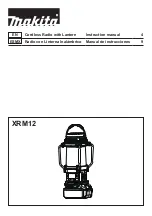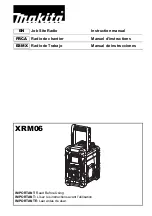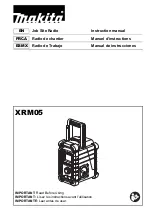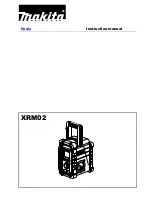
12
Operation
Power up
When the PYTHON III is first turned on, it will go through a complete self-test. The radar will
first perform a light test, in which all of the display's speed indicators will light, and then the radar
will perform a 32 mph internal circuitry test. After the self-test, the current software version will
be shown.
Tuning Fork Tests and Tuning Fork Mode
A tuning fork test is the standard test for proving that the antenna and counting unit are
functioning properly. In older analog radars, the dual tuning fork tests actually checked two
different circuits, one each for patrol and target speeds. However, the PYTHON III uses a single
circuit, the digital signal processor (DSP), to determine both speeds, so that testing the PYTHON
III with a single tuning fork in stationary mode actually ensures that the entire radar is working.
Despite this fact, MPH recommends that you follow your court-proven department guidelines for
performing tuning fork checks.
Stationary mode tuning fork tests
To perform a stationary mode tuning fork test. Strike the tuning fork on wood or plastic and hold
the ringing fork in a fixed position two or three inches in front of the antenna with the narrow edge
of the fork facing the antenna front. This will cause the target speed window to display the speed
labeled on the fork (+ 1 mph). While performing the tuning fork test, the audio volume level may
be set to a desirable level.
Fastest mode (FS units only) may be tested by using the lower speed tuning fork as above and by
placing the ringing higher speed fork into the antenna beam at a greater distance since the fastest
target should be a weaker signal than the target. The Fastest button may be pressed on the
remote to activate Fastest mode. For example, for forks marked 35 mph and 65 mph, the target
would read 35 (the closer fork) and the fastest window would read 65.
Moving mode tuning fork tests
Moving radar units are designed to acquire a patrol speed and look for target speeds that are
faster (opposite direction) or slower (same direction) than the patrol speed. These two speeds
can be simulated using tuning forks. The two forks are manufactured to vibrate at different
frequencies. One fork will be used to simulate patrol speed and the other target speed. In moving
mode, the speed printed on the target fork will not match the speed shown on the PYTHON III
display. It will be added to or subtracted from the patrol speed depending on the mode switch
selections.
For opposite direction moving mode, the lower speed fork will simulate patrol speed while the
higher speed fork will represent the target. For same direction moving mode, the higher speed will
be the patrol fork while the lower speed will be the target.















































